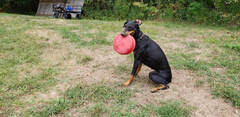
Does this mean some people are using methods and training and that don't work? Why can some methods be so different, but still seem to get great results for the dog training team?
| Mannerly Mutts Certified #1157 CEC NADOI Dog Trainer in York Maine |
|
 If you have ever looked into finding a complete dog training plan for your dog, you probably found a confusing amount of information out there. Some of one method's rules probably contradicted another's method rules. Does this mean some people are using methods and training and that don't work? Why can some methods be so different, but still seem to get great results for the dog training team?
|
Author, Robin RubinOwner and Head Dog Trainer in Maine, Robin Katherine Rubin, started her Maine dog training business in September 2004. Our dog training facility is located in Southern Maine in York Beach and we help families enjoy their dogs more, making sure they listen reliably and resolving unwanted behaviors. Archives
July 2024
Categories
All
|